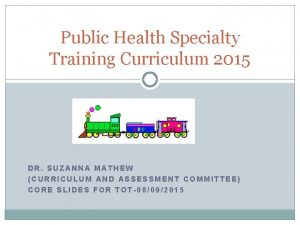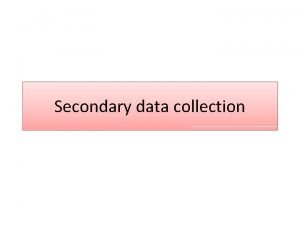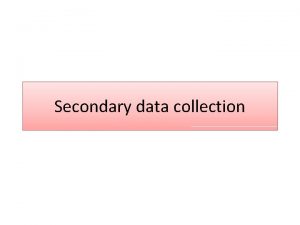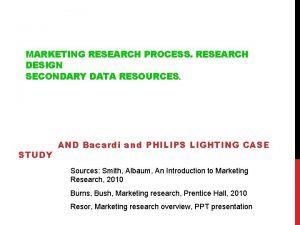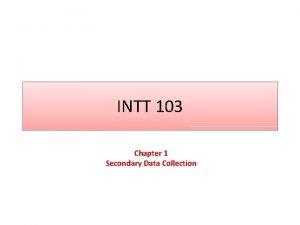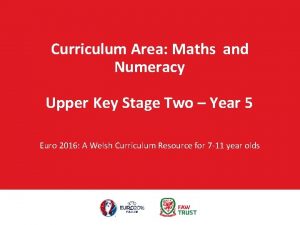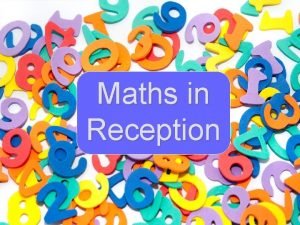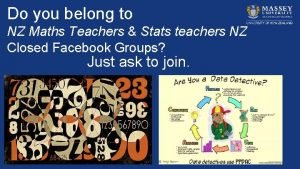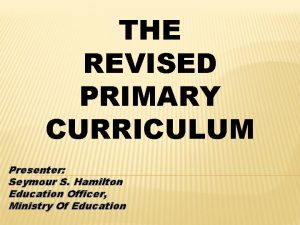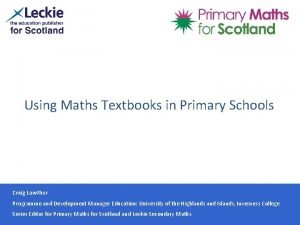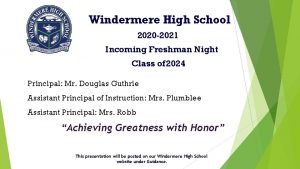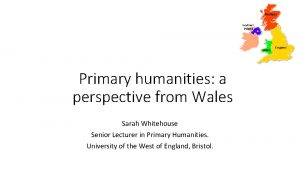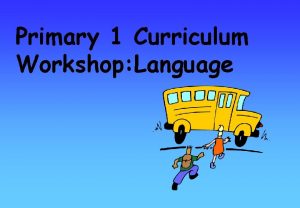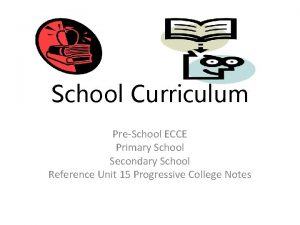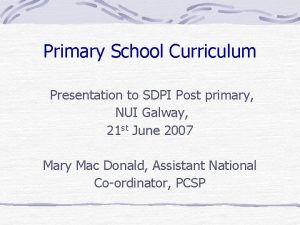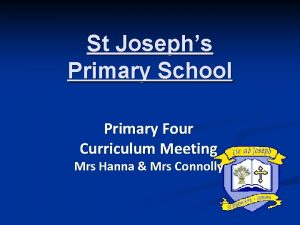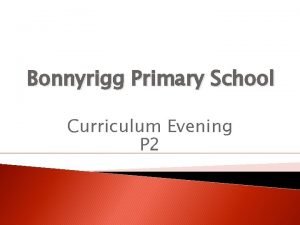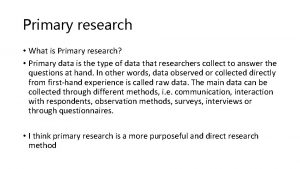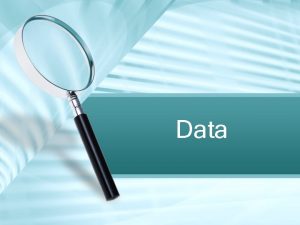Whitehouse Primary School Maths Curriculum 2015 Maths Data





















- Slides: 21

Whitehouse Primary School Maths Curriculum 2015

Maths Data KS 1 A B 2013 G 82% 84% 83% 91% 87% 91% 91% 89% 91% 90% 87% 92% 89% 90% 93% 92% � National 89% 92% 91% 90% 93% 91% 93% 92% � Levels 2 b and above � School 67% 68% 67% 52% 65% 59% 78% 78% � LA � B � Levels 2 and above � School 86% � LA 2012 G A B 2014 G A 76% 77% 76% 74% 77% 76% 80% 81% 80% � National 75% 78% 76% 80% 78% 82% 80% � Level 3 and above � School 24% 5% 14% 22% 4% 13% 30% 30% � LA 20% 17% 19% 23% 20% 22% 27% 21% 24% � National 24% 19% 22% 25% 21% 23% 26% 22% 24% �

Maths Data KS 2 � 2012 G A B 2013 G A B 2014 G B � Levels 4 and above � School 91% A 86% 89% 93% 100% � LA 86% 84% 85% 88% 88% 89% 88% � National 84% 84% 85% 85% 86% 86% � Levels 5 and above � School 55% 50% 53% 78% 61% 71% 48% 33% 40% � LA 45% 40% 42% 50% 43% 47% 48% 42% 45% � National 42% 36% 39% 43% 39% 41% 44% 40% 42% � Level 6 and above � School *** *** 35% 0% 20% 4% 13% 9% � LA *** *** 9% 6% 7% 10% 8% 9% � National*** *** 8% 5% 7% 10% 7% 9%

Maths Policy � Rationale � Mathematics is part of everyday life and we aim to ensure that our children have a solid foundation of knowledge and skills to apply to the problem solving situations of real life. We support and implement the current legal requirements of the New National Curriculum to enable children to become fully numerate. We aim to provide our children with a variety of experiences, which will help them to work logically and confidently as individuals and cooperatively within groups. Teachers encourage children to enjoy maths for its own sake, to develop an interest in investigative work and explain the reasons behind their thinking and chosen methods. � Aims � Expectations will be recognised and shared with pupils; they will be consistently high, but also realistic. � Pupils will learn in a largely interactive environment, in order to raise achievement and develop ownership of the learning process. � Through regular problem solving activities, children will be able to see the relevance of mathematics in their everyday lives. � Mathematics will be placed within the whole curriculum, so enabling pupils to apply their mathematical skills in cross curricular activities, where appropriate. � Objectives � To develop mathematical reasoning and decision making in problem solving and to be able to explain their methods using mathematical terms. � To be able to use known facts and skills to solve problems that are new to them. � To have mental strategies and images to call upon to work with numbers flexibly and efficiently. � To be able to judge whether their answers are reasonable and have strategies for checking them where necessary. � To understand use the properties of shape, position and movement. � To understand use measures and measuring instruments in everyday situations. � To be able to collect, represent and interpret data in a range of contexts. � To begin to understand probability through their own experience and simple experiments.

Core Skills Reception Numbers as labels for counting Describing shape, position and movements Calculating LF LF Count reliably at least 6 objects Recognize numerals 1 -5 Represent number using up to 5 fingers Count 1 -5 items touching them Count 1, 2, 3, 4, 5 then 5, 4, 3, 2, 1 Describe shapes in simple models, pictures and patterns Sorts/matches objects ad talks about sorting Recognise and continue repeating patterns Use everyday words to describe position Use language such as ‘circle’ or ‘bigger’ to describe the shape of solids and flat shapes UF UF Say number names in order Recognize numerals 1 -9 Counts reliably 1 -10 everyday objects and 10 -1 Order numbers up to 10 Represent numbers using up to 10 fingers Count aloud in 1 s, 2 s, 5 s or 10 s Respond to vocabulary in +/- games and rhymes Recognise difference in quantity when comparing sets of objects Say one more/less from a group of up to 5 objects Know that the last number counted is the number of items in the set Recognise groups of up to 3 objects UF Relate addition by combining two groups Relates subtraction to taking away In practical activities and discussion, begins to use the vocabulary involved in adding and subtracting Finds one more/less than a number from 1 -10 Share objects into equal groups and count how many in each group. ELG They recognize, create and describe patterns. Can name 2 D/3 D shapes and describe the features Children use everyday language to talk about size, weight, capacity, position, distance, time and money to compare quantities and objects and to solve problems. ELG Recognises numbers to 20 Can say one more/one less to 20 Can add single digit numbers Can subtract single digit numbers Can count on or back to find the answer Measure LF Say which quantity is more Understand simple measures: big/small, heavy/light, long/short, full/empty Experiment with objects/materials showing mathematical awareness UF Use developing mathematical ideas and methods to solve practical problems Use language such as ‘greater’ ‘smaller’ ‘heavier’ or ‘lighter’ to compare quantities Order two or three items by length or height Order two or three items by weight

Year 1 Core Skills Number and Place Value Count to and across 100, forwards and backwards, beginning with 0 or 1, or from any given number Count, read and write numbers to 100 in numerals; count in multiples of twos, fives and tens Multiplication and Division Addition and Subtraction Solve one-step problems involving multiplication and division, by calculating the answer using concrete objects, pictorial representations and arrays with the support of the teacher . When given a number, identify one more and one less Identify and represent numbers using objects and pictorial representations including the number line, and use the language of: equal to, more than, less than (fewer), most, least read and write numbers from 1 to 20 in numerals and words Add and subtract one-digit and two-digit numbers to 20, including zero Solve one-step problems that involve addition and subtraction, using concrete objects and pictorial representations, and missing number problems such as 7 = – 9 Use the range of vocabulary related to addition Use number lines to count on and back Chanting in 2 s, 5 s, 10 s Count back in ones to subtract Read, write and interpret mathematical statements involving addition (+), subtraction (–) and equals (=) signs, represent and use number bonds and related subtraction facts within 20

Year 1 Core Skills Measure Compare, describe and solve practical problems for: Mass/weight [for example, heavy/light, heavier than, lighter than] Capacity and volume [for example, full/empty, more than, less than, half full, quarter] Time [for example, quicker, slower, earlier, later]. Measure and begin to record the following: o lengths and heights o mass/weight o capacity and volume o time (hours, minutes, seconds) Recognise and know the value of different denominations of coins and notes Sequence events in chronological order using language [for example, before and after, next, first, today, yesterday, tomorrow, morning, afternoon and evening] Recognise and use language relating to dates, including days of the week, weeks, months and years Lengths and heights [for example, long/short, longer/shorter, tall/short, double/half] Fractions Tell the time to the hour and half past the hour and draw the hands on a clock face to show these times Recognise, find and name a half as one of two equal parts of an object, shape or quantity Recognise, find and name a quarter as one of four equal parts of an object, shape or quantity Geometry – Properties of shape Recognise and name common 2 D and 3 D shapes, including: 2 D shapes [for example, rectangles (including squares), circles and triangles] 3 D shapes [for example, cuboids (including cubes), pyramids and spheres ] Geometry – Position and direction Describe position, direction and movement, including whole, half, quarter and three quarter turns

Year 2 Core Skills Number and Place Value Count in steps of 2, 3, and 5 from 0, and in tens from any number, forward and backward Recognize the place value of each digit in a two-digit number (tens, ones) Identify, represent and estimate numbers using different representations, including the number line Compare and order numbers from 0 up to 100; use <, > and = signs Read and write numbers to at least 100 in numerals and in words Use place value and number facts to solve problems Multiplication and Division Addition and Subtraction Recall and use multiplication and division facts for the 2, 5 and 10 multiplication tables, including recognising odd and even numbers Calculate mathematical statements for multiplication and division within the multiplication tables and write them using the multiplication (×), division (÷) and equals (=) signs Show that multiplication of two numbers can be done in any order (commutative) and division of one number by another Solve problems involving multiplication and division, using materials, arrays, repeated addition, mental methods, and multiplication and division facts, including problems in contexts Solve problems with addition and subtraction: Using concrete objects and pictorial representations, including those involving numbers, quantities and measures Applying their increasing knowledge of mental and written methods Recall and use addition and subtraction facts to 20 fluently, and derive and use related facts up to 100 Add and subtract numbers using concrete objects, pictorial representations, and mentally, including: a two-digit number and ones a two-digit number and tens two-digit numbers adding three one-digit numbers Show that addition of two numbers can be done in any order (commutative) and subtraction of one number from another Recognize and use the inverse relationship between addition and subtraction and use this to check calculations and solve missing number problems

Year 2 Core Skills Measure Fractions Choose and use appropriate standard units to estimate and measure length/height in any direction (m/cm); mass (kg/g); temperature (°C); capacity (litres/ml) to the nearest appropriate unit, using rulers, scales, thermometers and measuring vessels Compare and order lengths, mass, volume/capacity and record the results using >, < and = Recognise and use symbols for pounds (£) and pence (p); combine amounts to make a particular value Find different combinations of coins that equal the same amounts of money Solve simple problems in a practical context involving addition and subtraction of money of the same unit, including giving change Compare and sequence intervals of time Tell and write the time to five minutes, including quarter past/to the hour and draw the hands on a clock face to show these times Know the number of minutes in an hour and the number of hours in a day Interpret and construct simple pictograms, tally charts, block diagrams and simple tables Recognise, find, name and write fractions 1/3, 1/4, 2/4, 3/4 of a length, shape, set of objects or quantity Write simple fractions for example, 1/2 of 6 = 3 and recognise the equivalence of 2/4 and 1/2 Statistics Geometry – Properties of shape Ask and answer simple questions by counting the number of objects in each category and sorting the categories by quantity. Ask and answer questions about totalling and comparing categorical data Identify and describe the properties of 2 D shapes, including the number of sides and line symmetry in a vertical line Identify and describe the properties of 3 D shapes, including the number of edges, vertices and faces Identify 2 D shapes on the surface of 3 D shapes, [for example, a circle on a cylinder and a triangle on a pyramid] Compare and sort common 2 D and 3 D shapes and everyday objects Geometry – Position and direction Order and arrange patterns of mathematical objects in patterns and sequences Use mathematical vocabulary to describe position, direction and movement, including movement in a straight line and distinguishing between rotation as a turn and in terms of right angles for quarter, half, three-quarter turns (clockwise and anti-clockwise)

Year 3 Core Skills Number and Place Value Multiplication and Division Count from 0 in multiples of 4, 8, 50 and 100; find 10 or 100 more or less than a given number Recognize the place value of each digit in a three-digit number (hundreds, tens, ones) Compare and order numbers up to 1000 Identify, represent and estimate numbers using different representations Read and write numbers up to 1000 in numerals and in words Solve number problems and practical problems involving these ideas Recall and use multiplication and division facts for the 3, 4 and 8 multiplication tables Write and calculate mathematical statements for multiplication and division using the multiplication tables that they know, including for two-digit numbers times one-digit numbers, using mental and progressing to formal written methods Solve problems, including missing number problems, involving multiplication and division, including positive integer scaling problems and correspondence problems in which n objects are connected to m objects Addition and Subtraction Add and subtract numbers mentally, including: o a three-digit number and ones o a three-digit number and tens o a three-digit number and hundreds o add and subtract numbers with up to three digits, using formal written methods of columnar addition and subtraction Estimate the answer to a calculation and use inverse operations to check answers Solve problems, including missing number problems, using number facts, place value, and more complex addition and subtraction

Year 3 Core Skills Measure Measure, compare, add and subtract: lengths (m/cm/mm); mass (kg/g); volume/capacity (l/ml) Measure the perimeter of simple 2 D shapes Add and subtract amounts of money to give change, using both £ and p in practical contexts Tell and write the time from an analogue clock, including using Roman numerals from I to XII, and 12 -hour and 24 -hour clocks Estimate and read time with increasing accuracy to the nearest minute; record and compare time in terms of seconds, minutes and hours; use vocabulary such as o’clock, a. m. /p. m. , morning, afternoon, noon and midnight Know the number of seconds in a minute and the number of days in each month, year and leap year Compare durations of events [for example to calculate the time taken by particular events or tasks] Fractions Count up and down in tenths; recognise that tenths arise from dividing an object into 10 equal parts and in dividing one-digit numbers or quantities by 10 Recognise and use fractions as numbers: unit fractions and non-unit fractions with small denominators Recognise and show, using diagrams, equivalent fractions with small denominators Add and subtract fractions with the same denominator within one whole [for example, 5/7 + 1/7 = 6/7] Compare and order unit fractions, and fractions with the same denominators Solve problems that involve all of the above. Statistics Interpret and present data using bar charts, pictograms and tables Solve one-step and two-step questions [for example, ‘How many more? ’ and ‘How many fewer? ’] using information presented in scaled bar charts and pictograms and tables Geometry – Properties of shape Draw 2 D shapes and make 3 D shapes using modelling materials; recognise 3 D shapes in different orientations and describe them Recognise angles as a property of shape or a description of a turn Identify right angles, recognise that two right angles make a half-turn, three make three quarters of a turn and four a complete turn; identify whether angles are greater than or less than a right angle Identify horizontal and vertical lines and pairs of perpendicular and parallel lines

Year 4 Core Skills Place Value Count in multiples of 6, 7, 9, 25 and 1000 Find 1000 more or less than a given number Count backwards through zero to include negative numbers Recognise the place value of each digit in a four-digit number (thousands, hundreds, tens, and ones) Order and compare numbers beyond 1000 Identify, represent and estimate numbers using different representations Round any number to the nearest 10, 100 or 1000 Solve number and practical problems that involve all of the above and with increasingly large positive numbers Read Roman numerals to 100 (I to C) and know that over time, the numeral system changed to include the concept of zero and place value Multiplication and Division Addition and Subtraction Recall multiplication and division facts for multiplication tables up to 12 × 12 Use place value, known and derived facts to multiply and divide mentally, including: Multiplying by 0 and 1; dividing by 1; multiplying together three numbers Recognise and use factor pairs and commutatively in mental calculations Multiply two-digit and three-digit numbers by a one-digit number using formal written layout Solve problems involving multiplying and adding, including using the distributive law to multiply two digit numbers by one digit, integer scaling problems and harder correspondence problems such as n objects are connected to m objects Add and subtract numbers with up to 4 digits using the formal written methods of columnar addition and subtraction where appropriate Estimate and use inverse operations to check answers to a calculation Solve addition and subtraction two-step problems in contexts, deciding which operations and methods to use and why

Year 4 Core Skills Measure Convert between different units of measure [for example, kilometre to metre; hour to minute] Estimate, compare and calculate different measures, including money in pounds and pence Measure and calculate the perimeter of a rectilinear figure (including squares) in centimetres and metres Find the area of rectilinear shapes by counting squares Read, write and convert time between analogue and digital 12 - and 24 -hour clocks Solve problems involving converting from hours to minutes; minutes to seconds; years to months; weeks to days Statistics Interpret and present discrete and continuous data using appropriate graphical methods, including bar charts and time graphs Solve comparison, sum and difference problems using information presented in bar charts, pictograms, tables and other graphs Geometry – Properties of shape Compare and classify geometric shapes, including quadrilaterals and triangles, based on their properties and sizes Identify acute and obtuse angles and compare and order angles up to two right angles by size Identify lines of symmetry in 2 D shapes presented in different orientations Complete a simple symmetric figure with respect to a specific line of symmetry Geometry – Position and direction Describe positions on a 2 D grid as coordinates in the first quadrant Describe movements between positions as translations of a given unit to the left/right and up/down Plot specified points and draw sides to complete a given polygon Fractions, Decimals and % Recognise and show, using diagrams, families of common equivalent fractions Count up and down in hundredths; recognise that hundredths arise when dividing an object by one hundred and dividing tenths by ten. Solve problems involving increasingly harder fractions to calculate quantities, and fractions to divide quantities, including non-unit fractions where the answer is a whole number Add and subtract fractions with the same denominator Recognise and write decimal equivalents of any number of tenths or hundredths Recognise and write decimal equivalents to 1/4, 1/2, ¾ Find the effect of dividing a one- or two-digit number by 10 and 100, identifying the value of the digits in the answer as ones, tenths and hundredths Round decimals with one decimal place to the nearest whole number Compare numbers with the same number of decimal places up to two decimal places Solve simple measure and money problems involving fractions and decimals to two decimal places

Year 5 Core Skills Place Value Read, write, order and compare numbers to at least 1 000 and determine the value of each digit Count forwards or backwards in steps of powers of 10 for any given number up to 1 000 Interpret negative numbers in context, count forwards and backwards with positive and negative whole numbers, including through zero Round any number up to 1 000 to the nearest 10, 1000, 10 000 and 100 000 Solve number problems and practical problems that involve all of the above Read Roman numerals to 1000 (M) and recognise years written in Roman numerals Multiplication and Division Identify multiples and factors, including finding all factor pairs of a number, and common factors of two numbers Know and use the vocabulary of prime numbers, prime factors and composite (non-prime) numbers Establish whether a number up to 100 is prime and recall prime numbers p to 19 Multiply numbers up to 4 digits by one - or two-digit number using a formal written method, including long multiplication for two-digit numbers Multiply and divide numbers mentally drawing upon known facts Divide numbers up to 4 digits by a one-digit number using the formal written method of short division and interpret remainders appropriately for the context Recognise and use square numbers and cube numbers, and the notation for squared (2) and cubed (3) Addition and Subtraction Secure in vertical (column) addition as set out in school methodology brochure with decimals Add and subtract whole numbers with more than 4 digits, including using formal written methods (columnar addition and subtraction) Add and subtract numbers mentally with increasingly large numbers Use rounding to check answers to calculations and determine, in the context of a problem, levels of accuracy Solve addition and subtraction multi-step problems in contexts, deciding which operations and methods to use and why Statistics Solve comparison, sum and difference problems using information presented in a line graph Complete, read and interpret information in tables, including timetables

Year 5 Core Skills Measure Convert between different units of metric measure (for example, kilometre and metre; centimetre and metre; centimetre and millimetre; gram and kilogram; litre and millilitre) Understand use approximate equivalences between metric units and common imperial units such as inches, pounds and pints Measure and calculate the perimeter of composite rectilinear shapes in centimetres and metres Calculate and compare the area of rectangles (including squares), and including using standard units, square centimetres (cm 2) and square metres (m 2) and estimate the area of irregular shapes Estimate volume [for example, using 1 cm 3 blocks to build cuboids (including cubes)] and capacity [for example, using water] Solve problems involving converting between units of time Use all four operations to solve problems involving measure [for example, length, mass, volume, money] using decimal notation, including scaling Geometry – Properties of shape Identify: 3 D shapes, including cubes and other cuboids, from 2 D representations Know angles are measured in degrees: estimate and compare acute, obtuse and reflex angles Draw given angles, and measure them in degrees (°) Identify: Angles at a point and one whole turn (total 360°) Angles at a point on a straight line and 1/2 a turn (total 180°) Other multiples of 90° Use the properties of rectangles to deduce related facts and find missing lengths and angles Distinguish between regular and irregular polygons based on reasoning about equal sides and angles Geometry – Position and direction Identify, describe and represent the position of a shape following a reflection or translation, using the appropriate language, and know that the shape has not changed Fractions, decimals and % Compare and order fractions whose denominators are all multiples of the same number Identify, name and write equivalent fractions of a given fraction, represented visually, including tenths and hundredths Recognise mixed numbers and improper fractions and convert from one form to the other and write mathematical statements > 1 as a mixed number [for example, 2/5 + 4/5 = 6/5 = 1 and 1/5] Add and subtract fractions with the same denominator and denominators that are multiples of the same number Multiply proper fractions and mixed numbers by whole numbers, supported by materials and diagrams Read and write decimal numbers as fractions [for example, 0. 71 = 71/100] Recognise and use thousandths and relate them to tenths, hundredths and decimal equivalents Round decimals with two decimal places to the nearest whole number and to one decimal place Read, write, order and compare numbers with up to three decimal places Solve problems involving number up to three decimal places Recognise the per cent symbol (%) and understand that per cent relates to ‘number of parts per hundred’, and write percentages as a fraction with denominator 100, and as a decimal Solve problems which require knowing percentage and decimal equivalents of 1/2, 1/4, 1/5, 2/5, 4/5 and those fractions with a denominator of a multiple of 10 or 25

Year 6 Core Skills Place Value Read, write, order and compare numbers up to 10 000 and determine the value of each digit Round any whole number to a required degree of accuracy Use negative numbers in context, and calculate intervals across zero Solve number and practical problems that involve all of the above Multiplication and Division Ratio and proportion Solve problems involving the relative sizes of two quantities where missing values can be found by using integer multiplication and division facts Solve problems involving the calculation of percentages [for example, of measures, and such as 15% of 360] and the use of percentages for comparison Solve problems involving similar shapes where the scale factor is known or can be found Solve problems involving unequal sharing and grouping using knowledge of fractions and multiples Multiply multi-digit numbers up to 4 digits by a two-digit whole number using the formal written method of long multiplication Divide numbers up to 4 digits by a two-digit whole number using the formal written method of long division, and interpret remainders as whole number remainders, fractions, or by rounding, as appropriate for the context Divide numbers up to 4 digits by a two-digit number using the formal written method of short division where appropriate, interpreting remainders according to the context Addition and Subtraction Identify common factors, common multiples and prime numbers Algebra Use simple formulae Generate and describe linear number sequences Express missing number problems algebraically Find pairs of numbers that satisfy an equation with two unknowns Enumerate possibilities of combinations of two variables Perform mental calculations, including with mixed operations and large numbers Use their knowledge of the order of operations to carry out calculations involving the four operations Solve addition and subtraction multi-step problems in contexts, deciding which operations and methods to use and why Solve problems involving addition, subtraction, multiplication and division Use estimation to check answers to calculations and determine, in the context of a problem, an appropriate degree of accuracy Statistics Solve comparison, sum and difference problems using information presented in a line graph Complete, read and interpret information in tables, including timetables

Year 6 Core Skills Measure Solve problems involving the calculation and conversion of units of measure, using decimal notation up to three decimal places where appropriate Use, read, write and convert between standard units, converting measurements of length, mass, volume and time from a smaller unit of measure to a larger unit, and vice versa, using decimal notation to up to three decimal places Convert between miles and kilometres Recognise that shapes with the same areas can have different perimeters and vice versa Recognise when it is possible to use formulae for area and volume of shapes Calculate the area of parallelograms and triangles Calculate, estimate and compare volume of cubes and cuboids using standard units, including cubic centimetres (cm³) and cubic metres (m³), and extending to other units [for example, mm³ and km³] Statistics Interpret and construct pie charts and line graphs and use these to solve problems Calculate and interpret the mean as an average Geometry – Properties of shape Draw 2 D shapes using given dimensions and angles Recognise, describe and build simple 3 D shapes, including making nets Compare and classify geometric shapes based on their properties and sizes and find unknown angles in any triangles, quadrilaterals, and regular polygons Illustrate and name parts of circles, including radius, diameter and circumference and know that the diameter is twice the radius Recognise angles where they meet at a point, are on a straight line, or are vertically opposite, and find missing angles Geometry – Position and direction Describe positions on the full coordinate grid (all four quadrants) Draw and translate simple shapes on the coordinate plane, and reflect them in the axes Fractions, decimals and % Use common factors to simplify fractions; use common multiples to express fractions in the same denomination Compare and order fractions, including fractions > 1 Add and subtract fractions with different denominators and mixed numbers, using the concept of equivalent fractions Multiply simple pairs of proper fractions, writing the answer in its simplest form [for example, 1/4 × 1/2 = 1/8] Divide proper fractions by whole numbers [for example, 1/3 ÷ 2 = 1/6] Associate a fraction with division and calculate decimal fraction equivalents [for example, 0. 375] for a simple fraction [for example, 3/8] Identify the value of each digit in numbers given to three decimal places and multiply and divide numbers by 10, 100 and 1000 giving answers up to three decimal places Multiply one-digit numbers with up to two decimal places by whole numbers Use written division methods in cases where the answer has up to two decimal places Solve problems which require answers to be rounded to specified degrees of accuracy Recall and use equivalences between simple fractions, decimals and percentages, including in different contexts

Whitehouse Primary Methodology

Whitehouse Primary Methodology

Whitehouse Primary Methodology

Whitehouse Primary Methodology
 Woodrow the white house mouse
Woodrow the white house mouse Http://www.whitehouse.gov/administration/cabinet
Http://www.whitehouse.gov/administration/cabinet Http://www.whitehouse.gov/administration/cabinet
Http://www.whitehouse.gov/administration/cabinet Whitehouse.gov
Whitehouse.gov Fph curriculum 2015
Fph curriculum 2015 Japanese school hat
Japanese school hat Management research question hierarchy
Management research question hierarchy Primary data
Primary data Data collection procedure example
Data collection procedure example Secondary data examples
Secondary data examples Primary data and secondary data
Primary data and secondary data Scale vs ordinal
Scale vs ordinal Upper key stage 2 maths curriculum
Upper key stage 2 maths curriculum Reception maths curriculum
Reception maths curriculum Nz maths curriculum
Nz maths curriculum Ipc personal goals
Ipc personal goals Revised primary curriculum grade 1-3
Revised primary curriculum grade 1-3 Primary care practice facilitation curriculum
Primary care practice facilitation curriculum Magic quadrant for data center networking 2015
Magic quadrant for data center networking 2015 Lowther higher maths ebook download
Lowther higher maths ebook download Magenta cyan and yellow are the ____ color. *
Magenta cyan and yellow are the ____ color. * Windermere high school principal
Windermere high school principal




